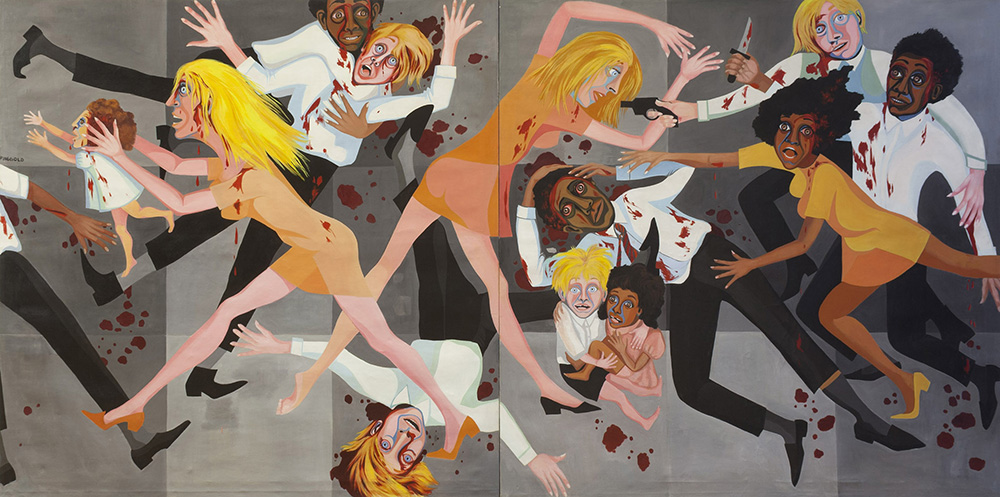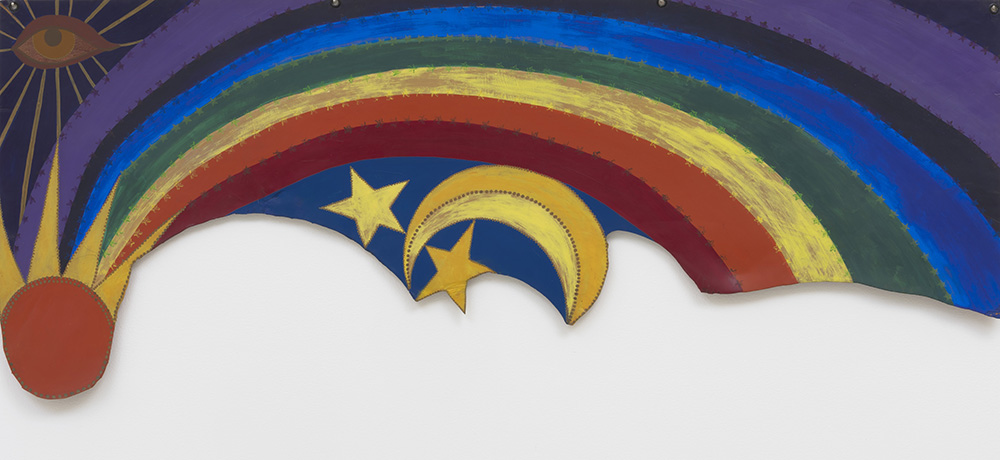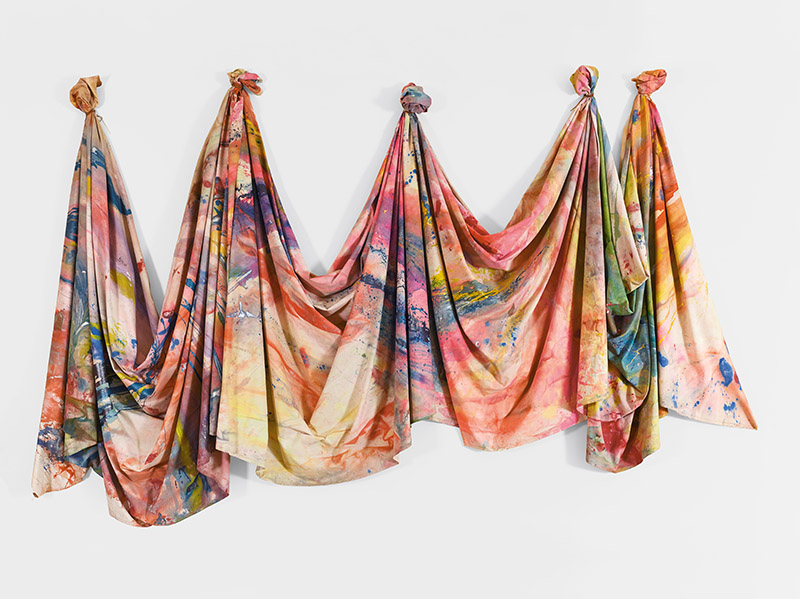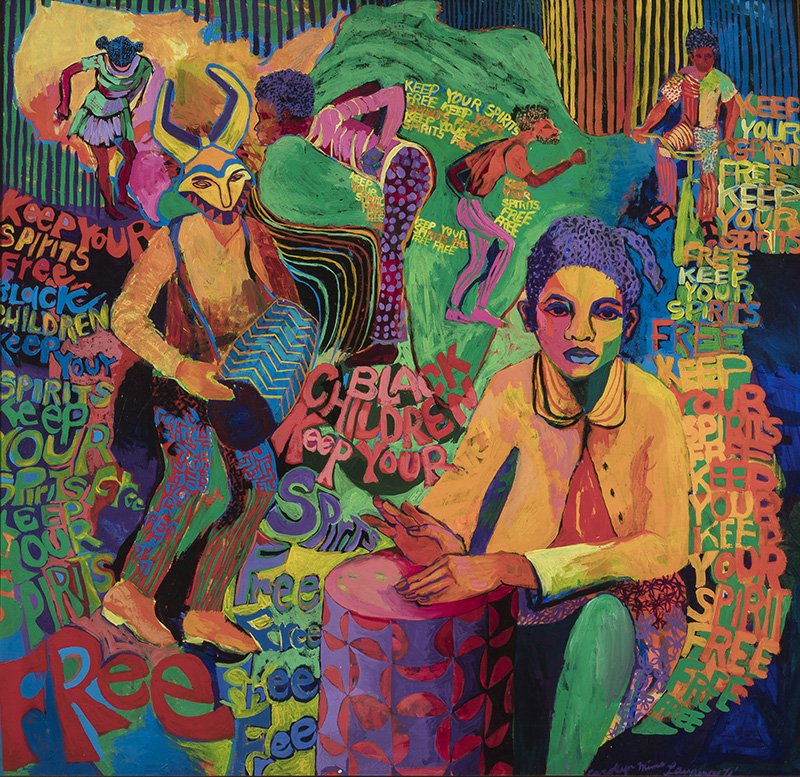ART CITIES:London-Soul of a Nation Art in the Age of Black Power
 What did it mean to be a Black artist in the USA during the Civil Rights movement and at the birth of Black Power? What was art’s purpose and who was its audience? The exhibition “Soul of a Nation: Art in the Age of Black Power”, a explores how these issues played out among and beyond African American artists from 1963 to 1983.
What did it mean to be a Black artist in the USA during the Civil Rights movement and at the birth of Black Power? What was art’s purpose and who was its audience? The exhibition “Soul of a Nation: Art in the Age of Black Power”, a explores how these issues played out among and beyond African American artists from 1963 to 1983.
By Dimitris Lempesis
Photo: Tate Archive
At a time when race and identity became major issues in music, sport and literature, brought to public attention, “Black Art” was being defined and debated across U.S.A. in vibrant paintings, photographs, prints and sculptures. Featuring more than 150 works by over 60 artists, many on display in the UK for the first time, “Soul of a Nation Art in the Age of Black Power” explores how American cultural identity was re-shaped at a time of social unrest and political struggle. The exhibition begins in 1963 with the formation of the Spiral Group, a New York–based collective. They questioned how Black artists should relate to American society, with key figures like: Romare Bearden and Norman Lewis responding to current events in their photomontages and abstract paintings. Artists also considered the locations and audiences for their art, from local murals to nationally circulated posters and newspapers – with many turning away from seeking mainstream gallery approval to show artwork in their own communities through Black-owned galleries and artist-curated shows. The exhibition uses archive photographs and documentary material to illustrate the mural movement, including the “Wall of Respect” in Chicago and the “Smokehouse” wall paintings in Harlem. The way artists engaged with street activism is explored through posters and newspapers, such as the work of the Black Panther Party’s Culture Minister Emory Douglas, who declared “The ghetto itself is the gallery”. The call for Black Power initiated powerful and inspiring images of political leaders such as Malcolm X and Angela Davis and even works of radical abstraction invoking Martin Luther King’s legacy. The exhibition showcases this debate between figuration and abstraction, from Faith Ringgold’s “American People Series #20: Die” (1967) and Wadsworth Jarrell’s “Black Prince” (197) to Frank Bowling’s “Texas Louise” (1971) and Sam Gilliam’s “April 4” (1969). A highlight is “Homage to Malcolm” (1970) by Jack Whitten. Artists across the Unites States engaged in the Black Art debate. In Chicago in the late 1960s, Jeff Donaldson, Wadsworth Jarrell, Jae Jarrell, Barbara Jones-Hogu, Nelson Stevens and Gerald Williams, formed AfriCOBRA ( African Commune of Bad Relevant Artists), the only group to devise a manifesto for Black Art during this period. Their striking works offered a unique aesthetic combining bright colours, texts and images in dynamic ways. Meanwhile in Los Angeles the Watts Rebellion of 1965 had a direct impact on the art being produced there, with many artists calling attention to the politics of a divided city. Constructions by Noah Purifoy made use of debris found on the streets of Watts, while the work of Charles White and David Hammons shows the development of a distinct approach to the figure while responding to current events such as the restraining of Bobby Seale at his trial. Further themes investigated in the exhibition include the emergence of Black Feminism through the work of Betye Saar and Kay Brown, showing how the period marked a revolutionary moment of visibility for Black women, and debates over the possibility of a Black aesthetic in photography featuring work by Roy DeCarava. The exhibition also spotlights Just Above Midtown gallery (JAM), a pioneering New York commercial gallery that displayed the work of avant-garde Black artists and whose legendary programme spanned innovative approaches to sculpture and performance, using materials as unexpected as Black hair and tights.
Info: Curators: Mark Godfrey and Zoe Whitley, Assistant Curator: Priyesh Mistry, Tate Modern, Bankside, London, Duration: 12/7-22/10/17, Days & Hours: Mon-Thu & Sun 10:00-18:00, Fri-Sat 10:00-22:00, www.tate.org.uk







